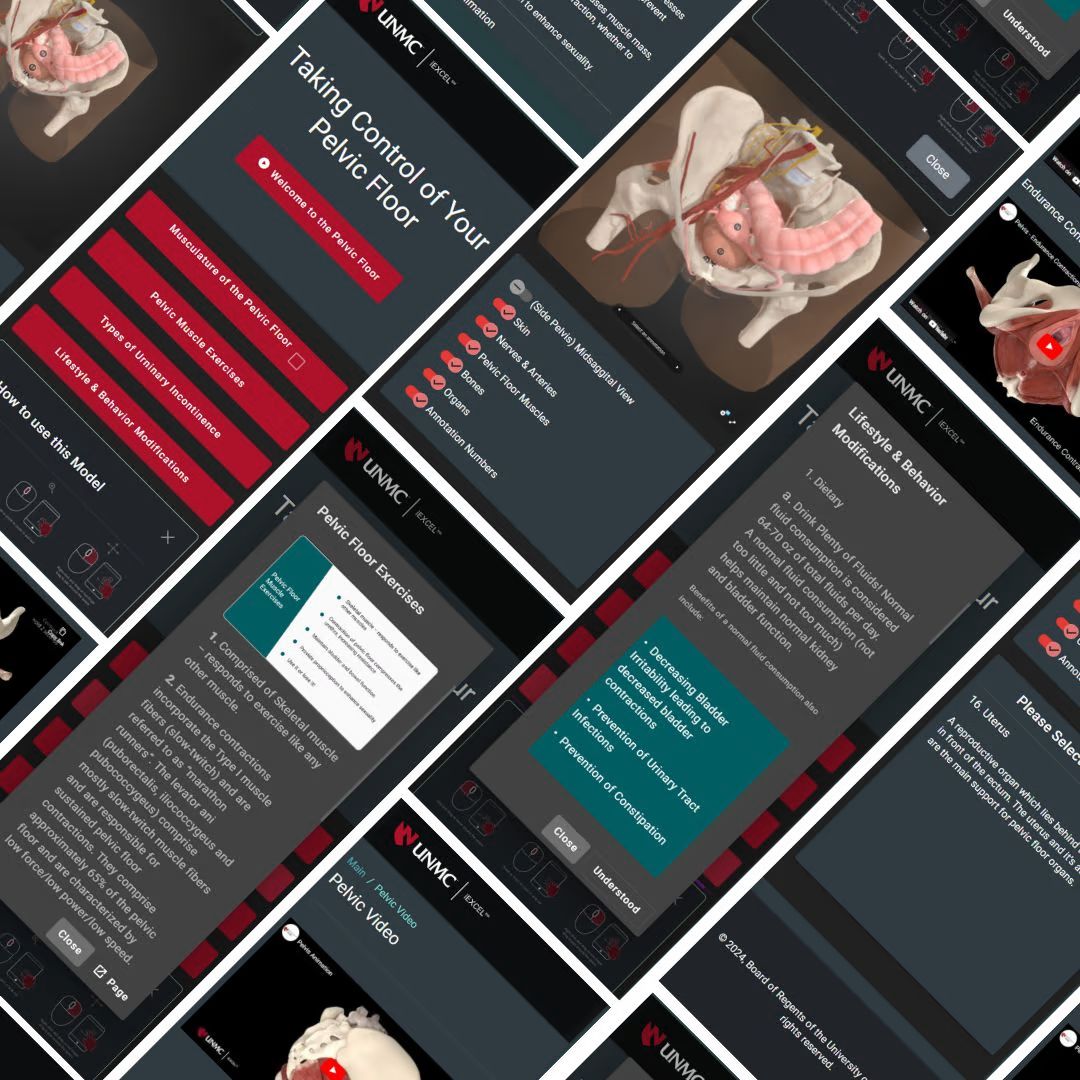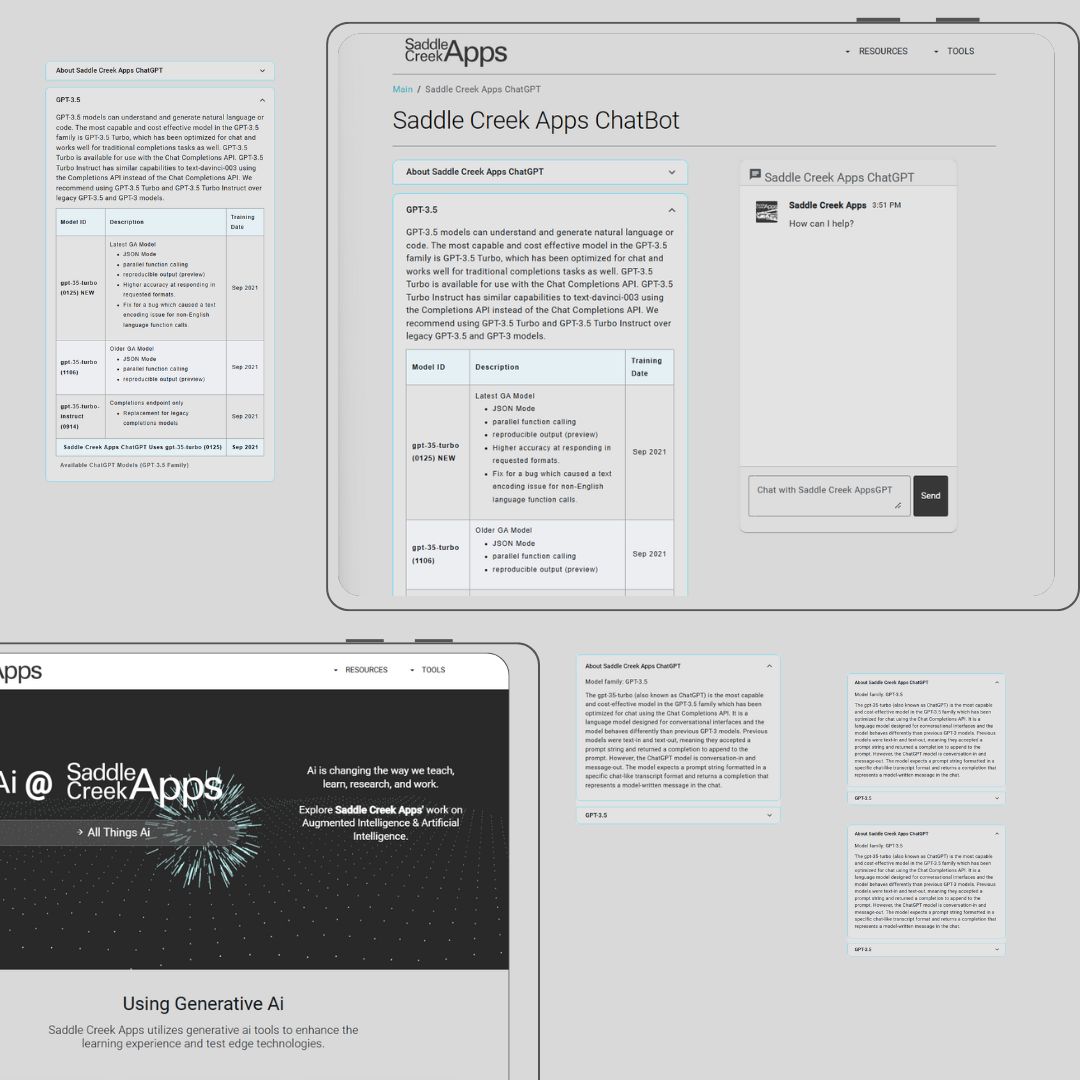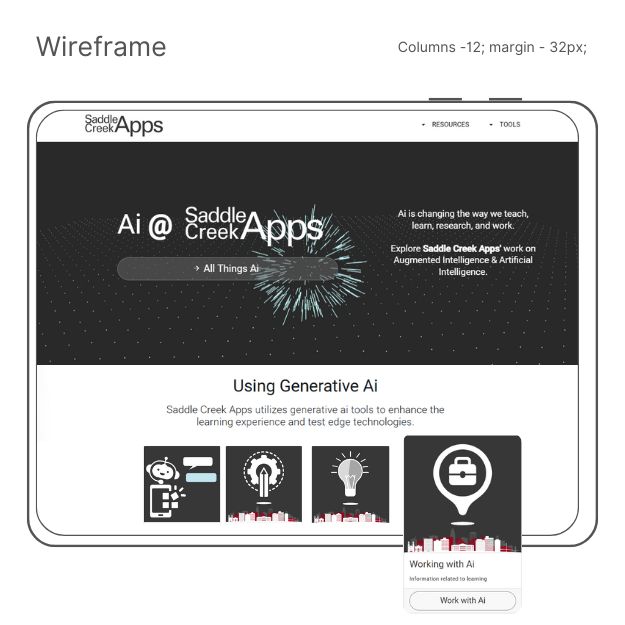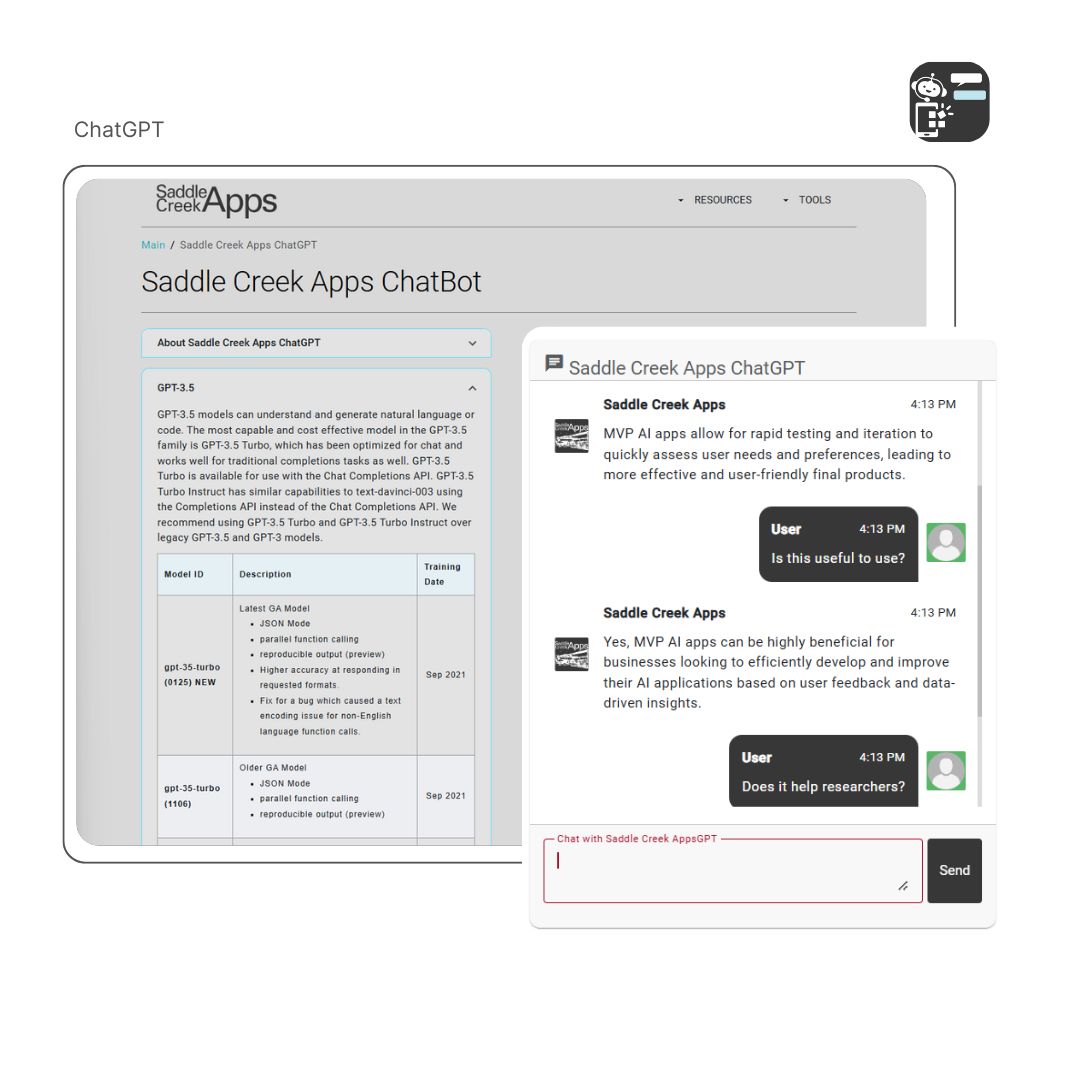- Our Work /
- 3D Pelvic Model
3D Pelvic Model
A Simulation Center business analytics and metrics application with advanced reporting, drill-down analytics, and real-time data capture. The iEXCEL App is a purpose-built technology solution for the Global Davis Center.
The application is designed to capture data from the center's activities, events, and simulations. The data is then used to measure the center's performance, manage resources, and make data-driven decisions. The application is designed to capture data from the center's activities, events, and simulations. The data is then used to measure the center's performance, manage resources, and make data-driven decisions.

A cloud hosted, scalable, and completely isolated infrastructure to explore the possibilities of Ai at UNMC.
A pilot build out of Ai tools, resources, & isolated chat GPT. This project required a collaboration between UNMC staff, committees, stakeholders, and much more.
Project Design UI/UX Image CDN Cloud Hosted Analytics Chat GPT Azure Cognitive Services Lucene Graph Bing Api SketchFab
SketchFab Integration
This application leverages SketchFab's powerful 3D model viewer technology to render anatomically accurate pelvic floor models directly in the browser. SketchFab provides:
- High-performance WebGL rendering for complex medical models
- Interactive annotations for educational points of interest
- Cross-platform compatibility across desktop and mobile devices
- Support for AR/VR experiences to enhance spatial understanding
- Secure model hosting with access controls for sensitive medical content
The integration with SketchFab allows for seamless embedding of complex 3D models while maintaining high performance even on less powerful devices, making anatomical education more accessible.
UNMC iEXCEL
Innovative Healthcare Education
The Interprofessional Experiential Center for Enduring Learning (iEXCEL) at the University of Nebraska Medical Center represents a transformative approach to healthcare education, combining advanced visualization, simulation, and interactive technologies.
Located in the Davis Global Center, iEXCEL provides healthcare students and professionals with immersive learning environments that bridge the gap between theoretical knowledge and practical application, ultimately improving patient outcomes through better-trained providers.
Technology-Enhanced Learning
iEXCEL leverages cutting-edge technologies including 3D/virtual/augmented reality, advanced simulation, visualization, and holography to create realistic training environments for complex medical procedures and scenarios.
By partnering with technology providers and development teams, iEXCEL continually expands its suite of educational tools, ensuring healthcare education remains at the forefront of innovation while addressing critical healthcare challenges.
Interactive 3D Medical Models in Education
Enhanced Comprehension
Traditional 2D illustrations in medical textbooks often fail to convey the complex spatial relationships of anatomical structures. Interactive 3D models allow students to:
- Rotate and view structures from any angle
- Isolate specific components to focus learning
- Visualize layered anatomy by toggling visibility
- Understand spatial relationships more intuitively
Clinical Applications
Beyond basic anatomy education, interactive 3D models support advanced clinical training in numerous ways:
- Surgical planning and procedure rehearsal
- Patient-specific anatomical variations
- Physiological and pathological state visualization
- Cross-disciplinary team communication
Learning Outcomes
Research demonstrates that interactive 3D learning significantly improves educational outcomes in medical training:
- 20-30% improvement in knowledge retention
- Faster acquisition of spatial understanding
- Greater confidence in clinical applications
- More effective self-directed learning
The Pelvic Floor Model Application
The 3D Pelvic Floor Model application specifically addresses the challenges in teaching and understanding this complex anatomical region by providing:
-
Anatomical Precision:
Medically accurate representations based on imaging data and expert validation, ensuring students learn correct structures and relationships.
-
Layer Isolation:
Ability to show or hide specific muscle groups, nerves, vasculature, and connective tissues to focus on particular anatomical elements.
-
Pathology Visualization:
Models of common conditions including pelvic organ prolapse, allowing comparison between normal and pathological states.
-
Dynamic Functionality:
Animations demonstrating physiological functions and dysfunctions, helping students understand functional anatomy.
Educator Testimonial
"The interactive 3D models have revolutionized how we teach pelvic anatomy. Students grasp concepts in minutes that previously took multiple lectures to convey. The ability to manipulate and explore the models leads to deeper understanding and better clinical preparedness."
- Faculty Member, UNMC
Scope of work
Every design journey starts off with a wireframe of all the requested features and a plan for user flow through the web app.
All of these features were built out in a cloud hosted Azure app that is completely isolated and in a secure tenant. The app is built to scale and can be handed off to a production environment or solution owner.
This MVP build includes a chatGPT, Bing Ai Search, Ai News and was stood up to capture the vision of the UNMC Ai Committee and faculty. We have discovered that many of the tools and resources are already available and can be integrated into the app. And that just having a physcial place to explore Ai tools and resources is a great asset to spark the possible solutioning for Ai.
Research
- Status Quo Research
- Requirements Document
- Project Scope
UX Design
- Wireframes
- User Flow
- Feature Requests
MVP Build
- Angular App
- API Gateway
- Azure Services

Research & Design
A lot of time was spent researching the current Ai tools and resources available to UNMC. This research was used to create a requirements document and project scope.
The project scope was used to create wireframes and a user flow for the app. The wireframes were used to create a feature list and a plan for the MVP build.
Wireframe & MVP
The wireframes were used to create a feature list and a plan for the MVP build. The MVP build was created to capture the vision of the UNMC Ai Committee and faculty.
We used Angular to build the app and Azure services to host the app. The app is completely isolated and in a secure tenant. The backend uses Asp.NET Core hosted in an API Gateway. The benefits of this setup are that the app is scalable and can be handed off to a production environment or solution owner.


Chat GPT
This app uses Azure Cognitive Services to host a chatGPT. The chatGPT is a powerful tool that can be used to answer questions and also to provide information.
This version of the chatGPT is isolated and can be used to explore the possibilities of Ai at UNMC. The version of chatGPT can be rolled up as new version are released and the model can be retrained.
